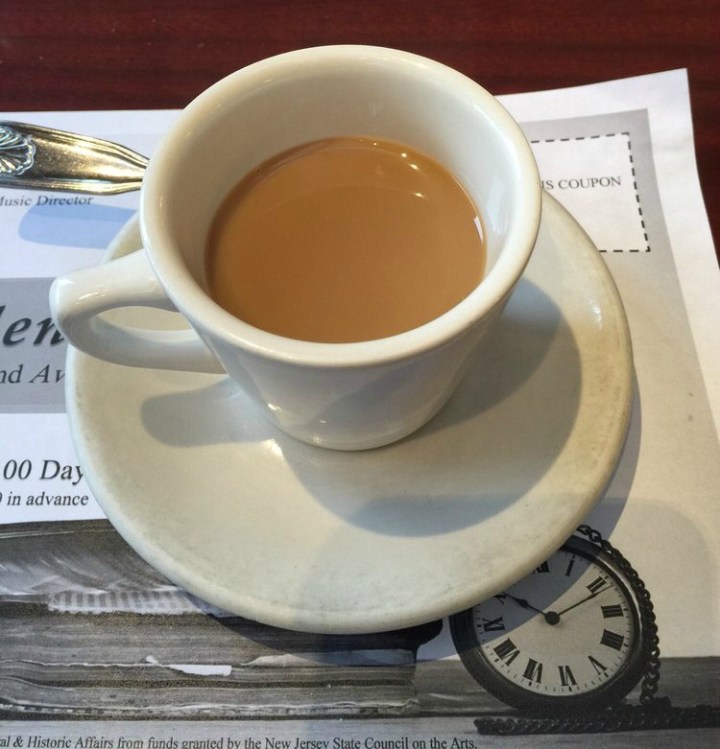This essay was awarded honorable mention in Notre Dame Magazine’s 2015 Young Alumni Essay Contest. It was originally published at magazine.nd.edu.
Everyone on Dallas Avenue knew Yaya’s high-pitched cackle.
My grandfather would walk home from the train station each night and hear her laugh from a block away. That’s Dorothy, he’d think to himself. She was usually on the phone. She was usually telling a story.
The phone connected Yaya to everyone she wanted to talk to and everywhere she needed to be. Even before coffee, the first thing she’d do each morning was roll over and check her stocks by punching in numbers. She wore out three keypads in just a few years of checking and trading those stocks. And she made my grandfather buy 25-foot-long cords for all phones in the house so she could chat away from absolutely anywhere.
From an early age I loved talking on the phone with Yaya and begged her to tell me the stories I knew and loved. Like the time in high school the nuns caught her smoking in the bathroom, so she filled her mouth with powdered soap to mask the smell but ended up with foam bubbling out of her mouth as she explained herself to the principal. Those stories reached a level of pure absurdity it seemed only Yaya could concoct.
We had serious conversations, too, she lying on her bed in Long Island, me on mine in New Jersey. One summer when I was around 13, a girl my age died in a tragic jet-skiing accident. A few of my friends knew her, and her death deeply affected me. I spent the night writing a poem for the girl and read it to Yaya, and then we talked about death and dying until our conversation slowed to a standstill. She was always straightforward about the topic, saying “when I die” or “will you do this for me when I’m gone, baby?” as if it were inevitable. I always hushed her and changed the subject.
***
I was 17 when Yaya passed. It was obvious her health was deteriorating. Months earlier she’d stopped dyeing her hair that signature red, a sign of defeat too painful for me to admit. Her weight had dropped below 100 pounds, her bones were brittle and her spine was collapsing inch by inch. Despite all this, her death felt sudden because I never got to say good-bye.
She died in February, the coldest part of winter. My younger sisters cried in my bed, not understanding how a person goes from being here to being gone. I thought I was old enough, mature enough, to understand her death and help my siblings properly mourn. But 17 wasn’t old at all, and since emerging on the other side of college and moving to New York City I’ve started missing her in a new way.
Yaya was a city girl, a trait that skipped a generation and landed on me. Papa often tells the story of their 1970s summer house in Greenport, Long Island, where Yaya stayed inside all day, depressed. The town was too quiet and the nearest phone was a quarter mile away. Papa says she’d press her face to the window, longingly watching car lights pass on the main road — the closest sign to civilization. All night she’d gaze at those lights, smoking her cigarettes in silence.
My grandmother needed to be around people. The house had been her idea, but within a decade they sold it.
Yaya grew up in the 1930s and ’40s in the South Bronx Irish tenements, the daughter of first-generation Irish immigrants. When she was 14 her father died suddenly of appendicitis. So her mother took a job as a housemaid at the Waldorf Astoria and moved the family out to Pelham Bay.
Yaya’s father, who’d been a carpet salesman at the flagship Macy’s store in Midtown, instilled in her a strong work ethic and sense of pride in being busy. In her 20s, she was the secretary to a high-powered lawyer at General Motors. Yaya loved showing up to the big building on Broadway, working for the big shots and going out to lunch with the other girls for special occasions. They’d pick a fancy spot like the Russian Tea Room, Tavern on the Green or an Italian place called Patsy’s that Frank Sinatra used to frequent. Birthdays and engagements never went uncelebrated.
Yaya was just around my age when she worked for GM. Even though she never told me about her 20s in Manhattan — maybe she thought I was too young — little things around the city remind me of her. My favorite photograph was taken at the Copacabana nightclub, shortly after Papa proposed to Yaya in 1959. Every time I pass the Copacabana in Times Square I think of the original Upper East Side club and my grandparents at a table inside, looking so glamorous and in love. I have the photograph saved in my phone so I can pull it up and imagine how she’d tell me the story.
My phone can tell me all about the Copacabana’s history, play videos from the nightclub’s heyday, even show me my very last email from Dorothy Coyne. But for all it’s capable of, it can’t connect me to her.
Seven years since Yaya died, I still can’t get past the urge to call her. Sometimes I feel like the helpless 5-year-old who would erupt into tears when my grandparents left after a weekend visit. I’d sit sullenly on our stoop, eyes watering as their car backed out of the driveway and escaped at 60 miles per hour down the highway.
Then I’d go back inside and wait for the phone to ring.



